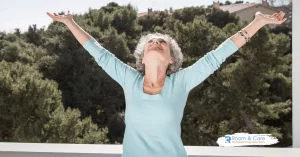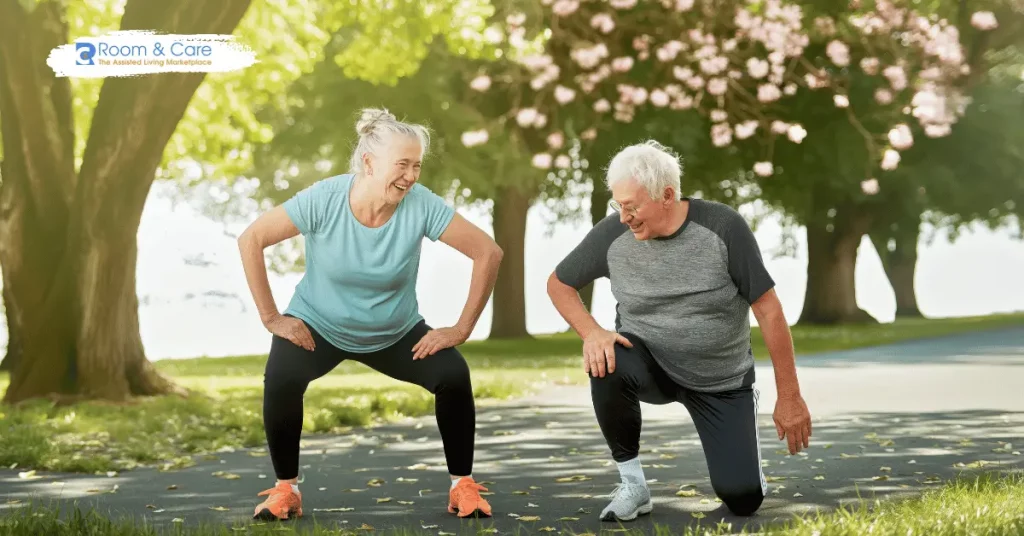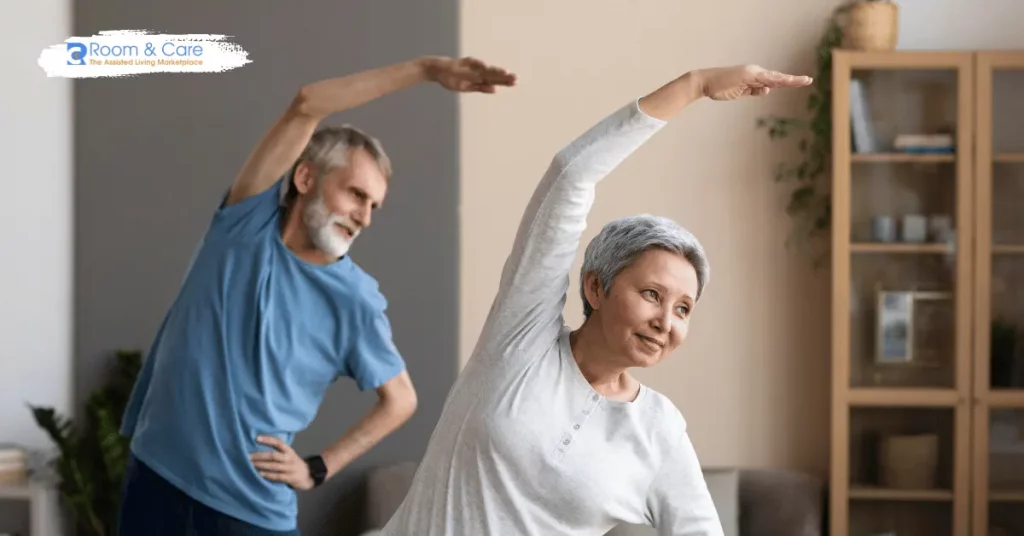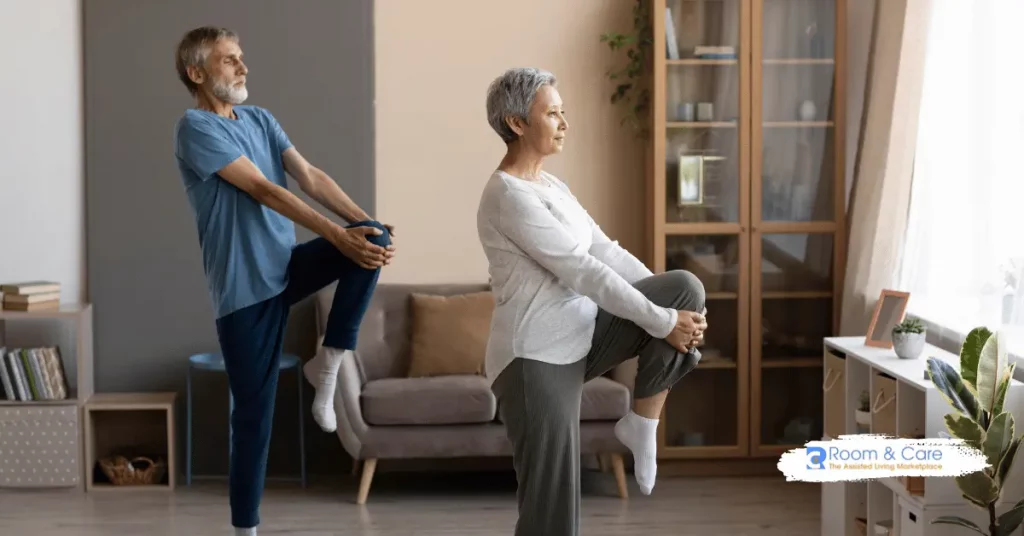

Staying active is a critical part of maintaining health, happiness, and independence, especially for seniors over 60. As we age, physical activity becomes essential for preventing chronic diseases, improving mental health, and ensuring the ability to perform daily tasks. Exercise for seniors over 60 is not just about physical fitness but also about enhancing quality of life.
In this comprehensive guide, we’ll explore the benefits of exercise, types of physical activity suitable for seniors, and tips to get started safely. Additionally, we’ll touch on how exercise relates to life in senior living communities like independent living facilities, assisted living homes, and adult family homes. We’ll answer common questions about exercising after 60, and provide practical advice to make it enjoyable and sustainable.
Aging brings about changes in strength, flexibility, balance, and metabolism, making it important to stay active. Regular exercise helps counteract these effects by keeping muscles strong, bones healthy, and the heart functioning optimally. According to the CDC, seniors who exercise regularly have lower rates of heart disease, hypertension, and stroke, compared to those who are less active.
Exercise also plays a key role in mental health. Research from the National Institute on Aging shows that physical activity can help reduce the risk of cognitive decline, enhance memory, and improve mood. In fact, exercise can even help delay or prevent conditions like dementia. For seniors who live in independent living facilities or adult family homes, staying active can promote mental well-being and a more fulfilling life.
Another significant benefit is the improvement in balance and coordination. This can reduce the risk of falls, which are a leading cause of injury among older adults. Preventing falls is particularly important for seniors who want to maintain their independence, whether living at home or in assisted living facilities.
In short, exercise is one of the most effective ways to maintain and even improve health as you age. Whether you’re looking to manage chronic conditions or stay fit for your daily routine, physical activity is the key.
Different types of exercises bring unique benefits to seniors over 60. Incorporating a variety of activities into your routine will ensure well-rounded fitness. Here’s a breakdown of the best types of exercise for seniors:
Aerobic exercises, also known as cardio, are essential for maintaining heart health and boosting endurance. For seniors, activities like brisk walking, swimming, cycling, and even light dancing can raise the heart rate without putting excessive strain on the body.
It’s recommended that seniors aim for at least 150 minutes of moderate aerobic activity per week. This could mean 30 minutes a day, five days a week. Aerobic exercise is accessible to almost everyone, and in senior living communities, you may find walking clubs, water aerobics, or even group fitness classes tailored for older adults.
Strength training is crucial for preserving muscle mass and bone density, both of which naturally decline with age. By maintaining muscle strength, seniors can improve mobility, balance, and the ability to carry out daily tasks independently.
For seniors over 60, strength training doesn’t have to involve heavy weights. Bodyweight exercises, resistance bands, or light dumbbells are effective ways to build strength safely. Exercises like squats, leg lifts, and seated shoulder presses are commonly recommended.
Many assisted living communities offer strength training sessions specifically designed for seniors, with instructors who ensure proper technique and safety.
Flexibility exercises like stretching and yoga help keep muscles limber and joints mobile, which can reduce the risk of injury. Balance exercises, on the other hand, are critical for preventing falls.
Yoga, Tai Chi, and simple balance exercises like standing on one leg can dramatically improve flexibility and coordination. Even chair yoga can provide meaningful benefits. For seniors in independent living or adult family homes, balance-focused classes may be offered as part of wellness programs.
Functional training is designed to mimic everyday movements, helping seniors maintain independence in daily life. These exercises improve strength, coordination, and balance, making it easier to perform tasks like getting out of a chair, carrying groceries, or climbing stairs.
Functional exercises often involve movements like squatting, reaching, and bending—movements we do every day. Seniors in assisted living or adult family homes may find that caregivers incorporate functional exercises into daily routines to enhance mobility and independence.

Starting an exercise routine after 60 doesn’t have to be daunting. By following these tips, you can start safely and enjoy the process:
Before beginning any new exercise program, it’s important to consult your healthcare provider, especially if you have chronic conditions or mobility concerns. Your doctor can recommend exercises that suit your health needs and may refer you to a physical therapist for additional guidance.
For seniors who are new to exercising or have been inactive for a while, it’s crucial to start slow. Begin with short sessions—10 to 15 minutes of light activity—and gradually build up to longer workouts. This gradual approach will help prevent injury and make exercise more enjoyable.
For example, if you start with 10 minutes of walking three times a week, you can gradually increase your time and frequency as your stamina improves.
If you live in or are considering a move to a senior living community—such as an independent living facility, assisted living home, or adult family home—explore the fitness programs they offer. Many communities provide group classes, access to fitness equipment, and personalized exercise plans designed for older adults.
Exercising with others can increase motivation and make the experience more enjoyable. If you live in an independent living or assisted living facility, consider joining a group class or walking club. Socializing while you exercise can boost your mental well-being and help you stick with your routine.
If you prefer exercising at home, consider inviting a friend or family member to join you for a walk or at-home workout session.
While exercise is important, it’s equally important to listen to your body and avoid overexertion. Pain, dizziness, or shortness of breath are signs that you should stop exercising and consult your healthcare provider. It’s okay to push yourself, but it’s essential to stay within your comfort zone and avoid injury.
Exercise plays a significant role in promoting health and well-being, regardless of living arrangements. However, in senior living communities—whether it’s independent living, assisted living, or an adult family home—exercise takes on additional importance. Here’s how physical activity ties into different living environments:
In independent living facilities, seniors have the freedom and support to pursue an active lifestyle. These communities often feature fitness centers, swimming pools, and organized group activities like walking clubs or dance classes. Many independent living facilities encourage regular exercise by offering classes tailored to the abilities and interests of seniors.
Regular exercise helps residents maintain their independence for as long as possible by keeping them fit, mobile, and mentally sharp.
For seniors who need more help with daily tasks, assisted living facilities offer support while encouraging physical activity. Many assisted living communities provide structured exercise programs, such as chair yoga, water aerobics, or strength training classes. The goal is to help residents maintain as much independence as possible while preventing the physical decline that can come with inactivity.
Staff members may also assist residents with personalized exercise routines, ensuring safety and providing encouragement. Physical activity in assisted living is about maintaining physical function, reducing the risk of falls, and promoting mental health.
Adult family homes typically house a smaller group of seniors, offering more personalized care in a home-like environment. In these settings, caregivers can assist with exercise routines tailored to individual needs, focusing on functional exercises that support daily living.
Whether it’s a gentle morning walk or simple balance exercises, caregivers in adult family homes play a crucial role in ensuring residents stay physically active.

Yes, it’s generally safe for seniors over 60 to exercise, but it’s important to consult with your doctor before starting any new exercise routine. Once you get the go-ahead, start slow and listen to your body.
A combination of aerobic exercises (like walking or swimming), strength training, flexibility, and balance exercises offers the most benefits. This ensures well-rounded fitness, helping seniors maintain strength, heart health, and coordination.
Absolutely. Exercise is one of the best ways to manage and even prevent chronic conditions like heart disease, arthritis, diabetes, and high blood pressure. Regular physical activity can improve overall health and reduce symptoms associated with these conditions.
The CDC recommends that seniors aim for at least 150 minutes of moderate-intensity aerobic exercise per week, along with two or more days of strength training activities.
There are plenty of low-impact exercises designed for seniors with limited mobility. Chair exercises, seated yoga, and water-based activities are excellent options that minimize strain on the joints.
The best way to reap the benefits of exercise is to make it a regular part of your daily routine. Here are a few strategies to help you stay consistent:
When considering a move to a senior living community, it’s important to think about how that community supports your physical and mental health. At Room and Care, we can help you find the best senior living options, including independent living facilities, assisted living homes, memory care units, and adult family homes. We make the process simple by connecting you directly with top-rated care options, without any referral fees or middlemen—reducing your costs and ensuring the best fit for your needs.
Exercise for seniors over 60 is vital for maintaining physical health, mental well-being, and independence. With the right exercise routine—whether it’s aerobic activity, strength training, or balance exercises—seniors can improve their quality of life and reduce the risk of chronic disease. Whether you live in an independent living facility, assisted living home, or adult family home, incorporating regular exercise into your routine is key to staying active and healthy.
If you or a loved one is considering moving to a senior living community, make sure to explore their fitness programs. Start your journey toward better health and well-being!